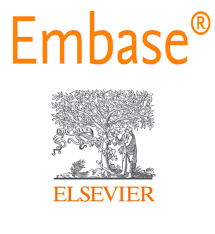HISTOPATHOLOGICAL INTERPRETATION OF UPPER GASTROINTESTINAL (CARDIAC) ENDOSCOPIC BIOPSIES IN GASTROESOPHAGEAL REFLUX DISEASE
Keywords:
Gastro-esophageal reflux disease, BE: Barrett's oesophagus, PAS: Periodic acid schiff stain, SIM: Squamous intraepithelial metaplasia.Abstract
GERD has been thought to be a disease of the Western world. The prevalence rates had been estimated to be lower in Asia as compared to the Western countries. Some recent epidemiological studies in India showed the prevalence of reflux disease is in between 8% and 24%, which is comparable to the Western world. The impact of adaptation of ‘western diet and lifestyle’, increasing obesity, spicy food habits leads to increase in prevalence of Barrett’s esophagus. This advancement has also resulted in better health education and awareness. Improved knowledge of the disease can result in an increased recognition of GERD; thereby causing an apparent increase in its prevalence. With this study, we were able to study spectrum of upper gastro-esophageal cardiac biopsies in patients with reflux symptoms, epigastric pain & regurgitation, etc. We have analyzed the various histopathological patterns GERD in which most common was Barrett’s esophagus, mild esophagitis, candidal and viral esophagitis, which is comparable with other Indian studies. This study suggests that there is increase in prevalence of Barrett’s esophagus in Indian community. In our study we have analyzed 75 cases of upper gastroesophageal cardiac biopsies and its various histological patterns in a referral tertiary care hospital. We have also correlated these features with special stain like PAS and alcian blue.Most common age group in the present study was middle and older people, with 69.3% were males and 30.7% were females. Out of 75 cases studied; 35 (46.7%) had Barrett’s esophagus, 14 (18.7%) had mild esophagitis, 6 (8.0%) had candidial esophagitis, 5 (6.7%) had acute ulcerative esophagitis, 5 (6.7%) had chronic esophagitis, 5 (6.7%) had viral esophagitis, 1 (1.3%) had infected granulation tissues, 3 (4.0%) had normal findings and 1 (1.3%) had GERD.
.png)









